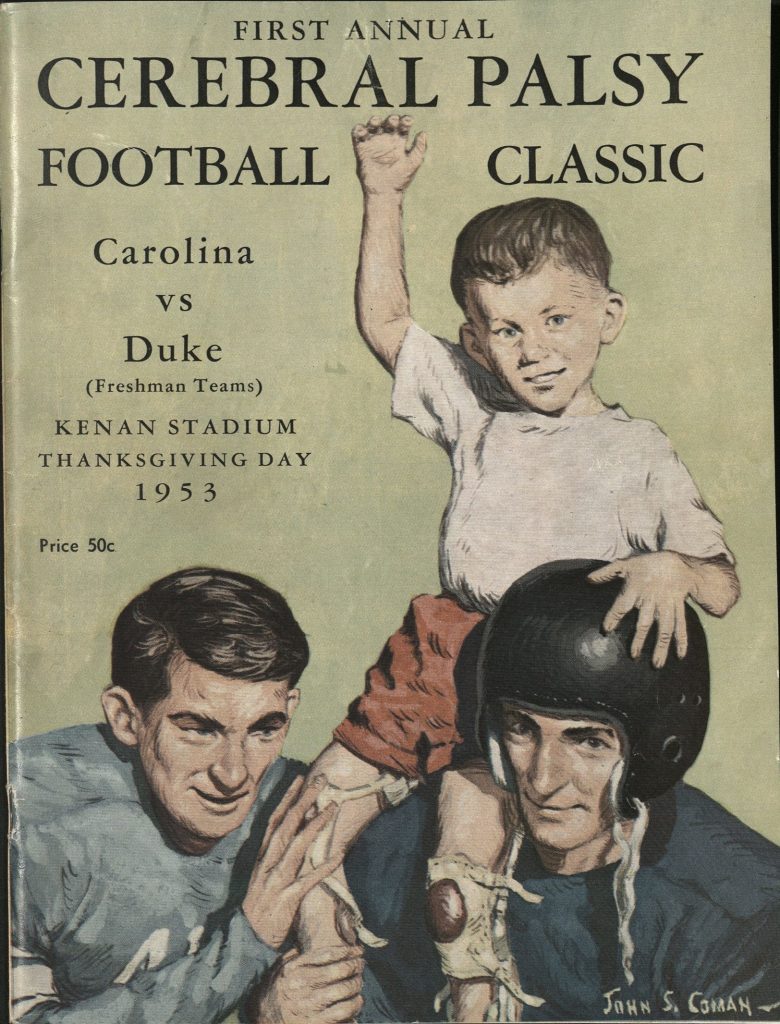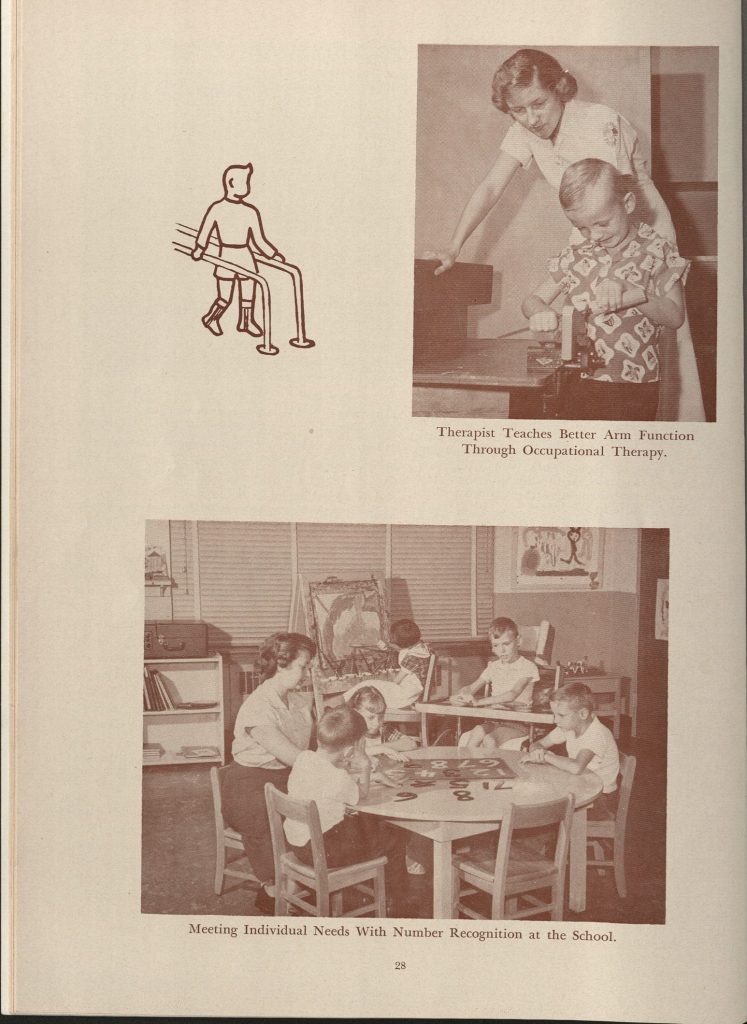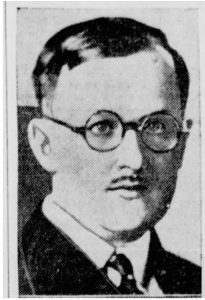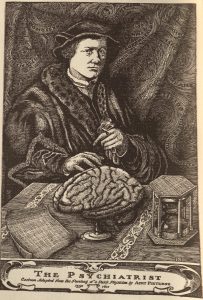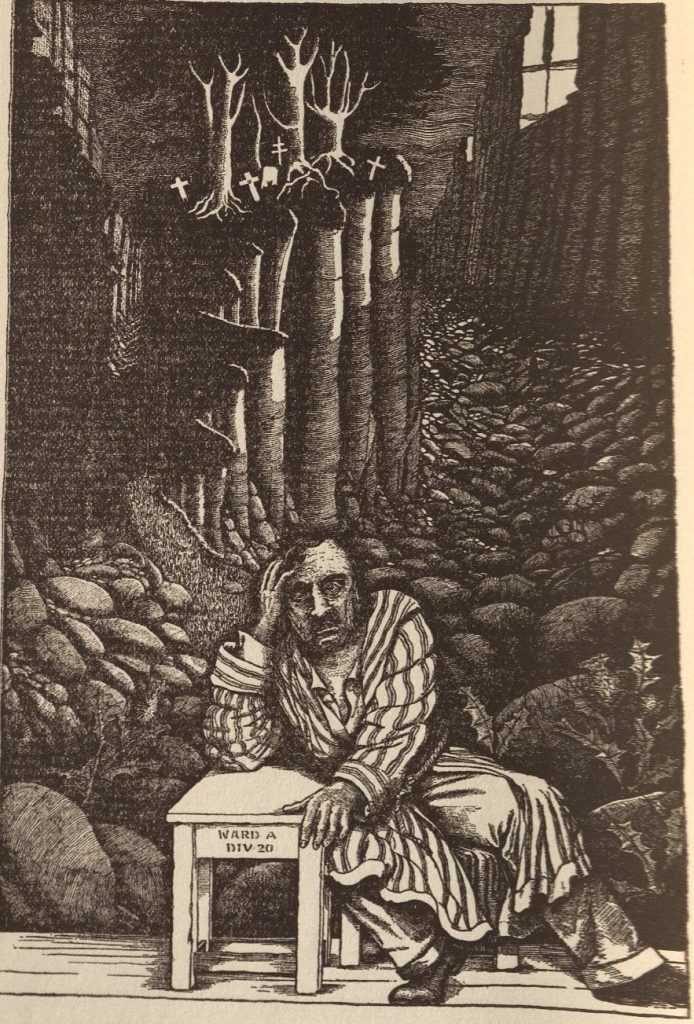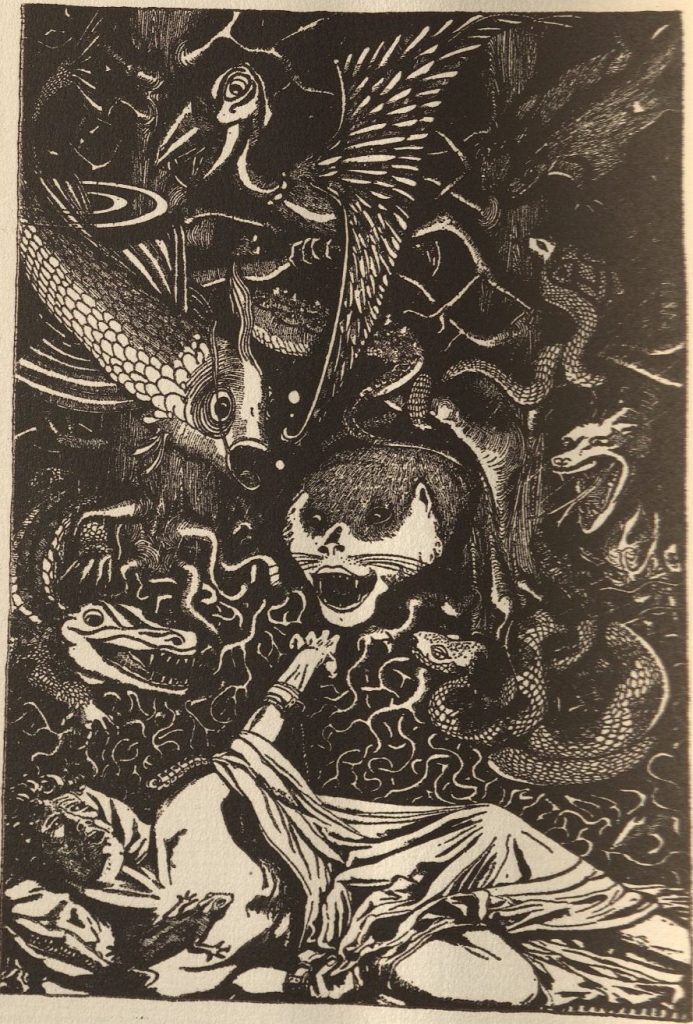Post contributed by Roger Pena, Research Services Librarian
During the Fall 2023 semester, the History of Medicine Collections of the Rubenstein Library welcomed close to 50 first-year graduate students from the Occupational Therapy program at Duke’s School of Medicine. Duke Health and Hospitals have provided occupational therapy services since the 1940s and 2021 marked the inaugural year of the Occupational Therapy Doctorate program.
Occupational Therapists (OTs) are trained in the social, emotional, and physical effects of an illness, injury or disability and help support the development of daily life (occupational) skills to help patients live independently and perform everyday tasks more easily and with less pain. For example, one (of many) functional areas OTs address is handwriting, where providers support skills through physical exercises, self reflection, organizational goals and confidence building.
Although it may be considered a “new” field, with the establishment of the National Society for Promotion of Occupational Therapy (now known as the American Occupational Therapy Association, or AOTA) in 1917, many principles and treatments of occupational therapy can be seen throughout medicine prior to the 20th century in areas such as psychiatry, hygiene, physical therapy and rehabilitation. What may surprise some is the fact that some early interventions of occupational therapy took from the arts and crafts movement of the early 20th Century as well as weaving, gardening and the art of bookbinding. By 1918, occupational therapy schools were established in Boston, Milwaukee, St. Louis and Philadelphia to train reconstruction aides (as OTs were known at the time) in evidence-based practices and treatments to help soldiers returning from World War I. Soon, however, occupational therapy would grow to reach a wider range of patients and those in need of more holistic interventions.
The visit to the Rubenstein Library served as an opportunity for these future OTs to interact with the History of Medicine Collections and Duke Medical Archives artifacts, manuscripts and rare books related to the history of their field and related branches of medicine.
Materials included:
- Massage roller and devices to help feed patients with physical limitations
- Duke football programs from the 1950s commemorating annual match between Duke and UNC to raise money for the NC Cerebral Palsy Hospital in Durham and raise awareness
- Medical illustrations and student journals from OTs
A Psychiatrist’s Outlet
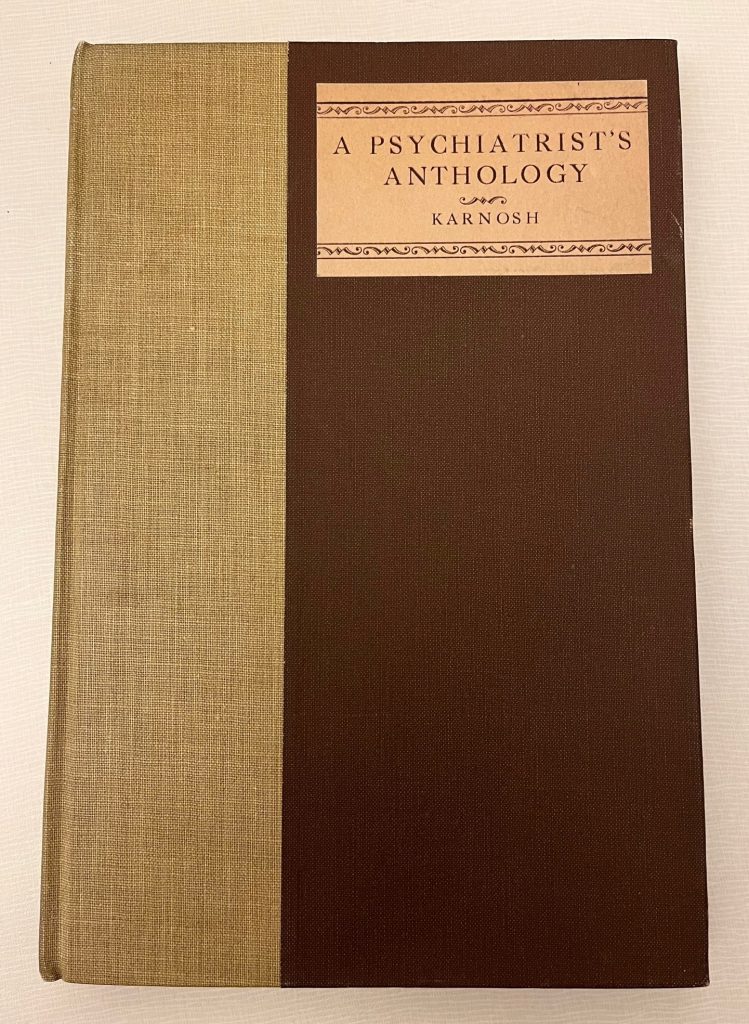 While curating Rubenstein Library materials for this session, one title of particular (and peculiar) interest was “A Psychiatrist’s Anthology” by Dr. Louis Karnosh, published in 1932 (2nd edition) by the Occupational Therapy Press. This small publisher was part of the formally named Neuro-psychiatry Department at City Hospital in Cleveland, Ohio. Dr Karnosh, a psychiatrist, was the head of the above-mentioned department and also served as a professor of pathology and dentistry at Case Western Reserve University. “A Psychiatrist’s Anthology” – a collection of poems and stories – is inspired by Karnosh’s patients and looks at six different psychiatric conditions suffered by those he is treating – delirium tremens, general paresis, melancholia, schizophrenia, paranoia, and senile dementia.
While curating Rubenstein Library materials for this session, one title of particular (and peculiar) interest was “A Psychiatrist’s Anthology” by Dr. Louis Karnosh, published in 1932 (2nd edition) by the Occupational Therapy Press. This small publisher was part of the formally named Neuro-psychiatry Department at City Hospital in Cleveland, Ohio. Dr Karnosh, a psychiatrist, was the head of the above-mentioned department and also served as a professor of pathology and dentistry at Case Western Reserve University. “A Psychiatrist’s Anthology” – a collection of poems and stories – is inspired by Karnosh’s patients and looks at six different psychiatric conditions suffered by those he is treating – delirium tremens, general paresis, melancholia, schizophrenia, paranoia, and senile dementia.
The anthology also serves as an ode to his love of poetry and book printing. The first part explains Karnosh’s reasoning for creating an anthology of poems and stories while also describing his desire to publish a book in the tradition of Old World book binding and printing. “As a specimen of bookcraft, this is but an amateur’s feeble emulation of master bookmakers of yesterday … The pen and ink sketches, the type composition and printing are done by the author.” The uncut pages, woodcut illustrations, the typography of the movable type, and the limited numbered copy give the air of books printed centuries before.
Every part of this anthology has symbolism and meaning to represent the six conditions Karnosh delves into through story and rhyme. The preface is written in poetic verse and explains Karnosh’s thoughts and ideas on what it means to be a psychiatrist while the introduction gives Karnosh the opportunity to speak to his readers about empathy for his patients – to not convolute mood with madness. ” I must keep to the road… Luring sirens… are calling and are singing phantastic farrago of popular psychologies. I must retain an objective calm…. I must first be an able dissector before I can synthesize…. Above all I must not treat diseased effectively by interjecting my own into the problem at hand. There must be no clash of feeling with feeling.” Each of the six conditions includes an original hand-drawn illustration, poem, and patient anecdote by Karnosh as well as a short encyclopedia entry about a mythical or literary figure to help the reader better connect to the condition(and patient) described. The folly of Prometheus to describe delirium tremens (alcohol withdrawal); Don Quixote to describe the condition of paranoia.
The (Poet) Doctor is In
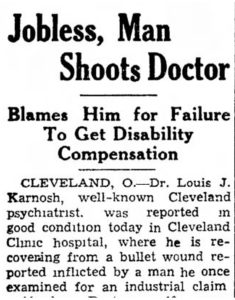
Physicians as poets and writers is a tradition that dates back centuries, from John Keats, William Llyod Carlos and Oliver Wendell Holmes Sr. to the contemporary Nawal El Saadawi, Irène Mathieu and Rafael Campos. Physicians have long seen the therapeutic value of writing and reading poetry for both patients and themselves. At Philadelphia Hospital, founder Benjamin Franklin and Dr. Benjamin Rush were proponents of patients using writing as therapy while Walt Whitman was known to visit field hospitals and read poetry to wounded soldiers during the Civil War.
A look into the life of Dr Karnosh revealed an interesting and almost haunting past. Aside from his responsibilities as the head of the Neuropsychiatry Department at Cleveland Hospital and medical school professor, Dr Karnosh served as an expert witness in the Cleveland area murder cases[1] for both prosecutors and defense teams, having the ultimate responsibility of determining the mental capacity of the accused to stand trial. In 1940, Dr Karnosh was shot[2] on the front door of his home by a former patient who had accused him of writing a negative evaluation that resulted in the loss of the patient’s pension. Karnosh survived the attack.
Writing and poetry seemed to have had a therapeutic value for Dr Karnosh and may have served as an outlet for all the stress and pressure that came with his responsibilities. He was known to give lectures on various topics across the Ohio area and contributed advice columns[3] in local papers. A look at the catalog record at Case Western Reserve University’s Library, shows several books attributed to Karnosh as the main author, co-author or medical illustrator, including a textbook on psychiatry for nurses that had eight different editions.
As for the link between physician and poetry, Dr. Rafael Campos, physician, poet and Director of Literature and Writing Programs of the Arts and Humanities Initiative at Harvard Medical School explains, “Poetry does a better job in teaching because it is about embracing the human aspect of suffering.” He goes on to say, “It’s our own humanity. That can be really healing for patients.”[4]
A New Approach
In explaining his thoughts for writing a “Psychiatrists Anthology,” Karnosh mentions that it is a “product of avocational moments of a psychiatrist who spends time with his patients in occupational therapy.” By the time the first edition was printed in 1931, occupational therapy had been an officially recognized medical discipline for close to fifteen years but “didn’t fit neatly into the medical model.” OT took a more holistic approach to therapy with aspects of nursing care, physical therapy, social work, psychiatry, health advocacy, and orthopedics seen in its treatments and interventions. Were poetry and art how Karnosh connected with his patients? Were these occupational skills part of his own mental well-being?
At a time when those with mental illness, physical disabilities and depression were seen as ills of society, occupational therapy and new OTs seemed to bring a breath of freshness to medicine with a focus on developing vocational skills as well as supporting the mental well-being of patients.
Today, there are approximately 500 accredited Occupational Therapy programs (with nearly 200 more vying for accreditation status) and over 180,000 occupational therapists and OT assistants practicing in schools, hospitals and outpatient clinics across the United States. As of December 12, 2023, Duke University’s Occupational Therapy Doctoral Program was granted accreditation from the Accreditation Council of Occupational Therapy Education (ACOTE).
Footnotes
[1] The Evening Review. East Liverpool, Ohio. Tuesday, January 26, 1932
[2] The Daily Sentinel-Tribune.Bowling Green, Ohio. Wednesday, July 03, 1940
[3] The Coshocton Tribune. Coshocton, Ohio. Thursday, October 12, 1939
[4] Demarco, S. (2020, March 11). Doctor-poets search for the right words to help patients heal. Los Angeles Times. https://www.latimes.com/science/story/2020-03-11/column-one-doctor-poets



